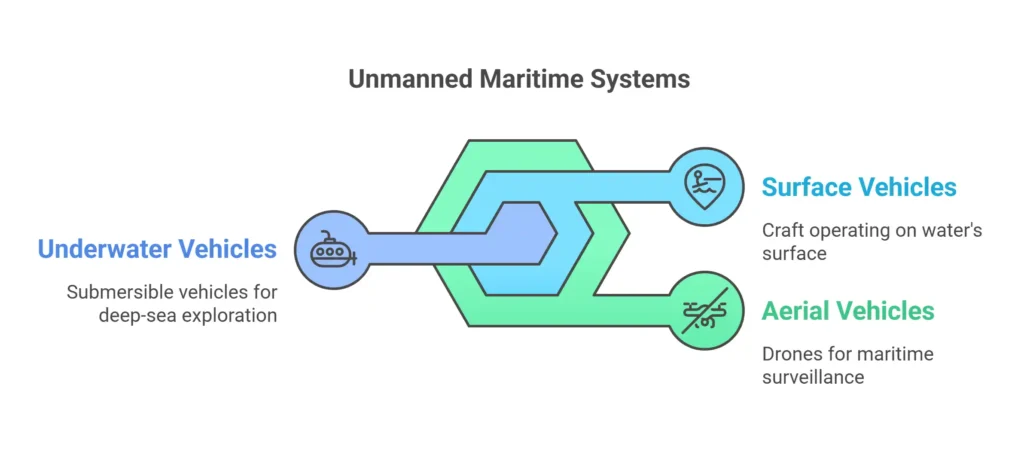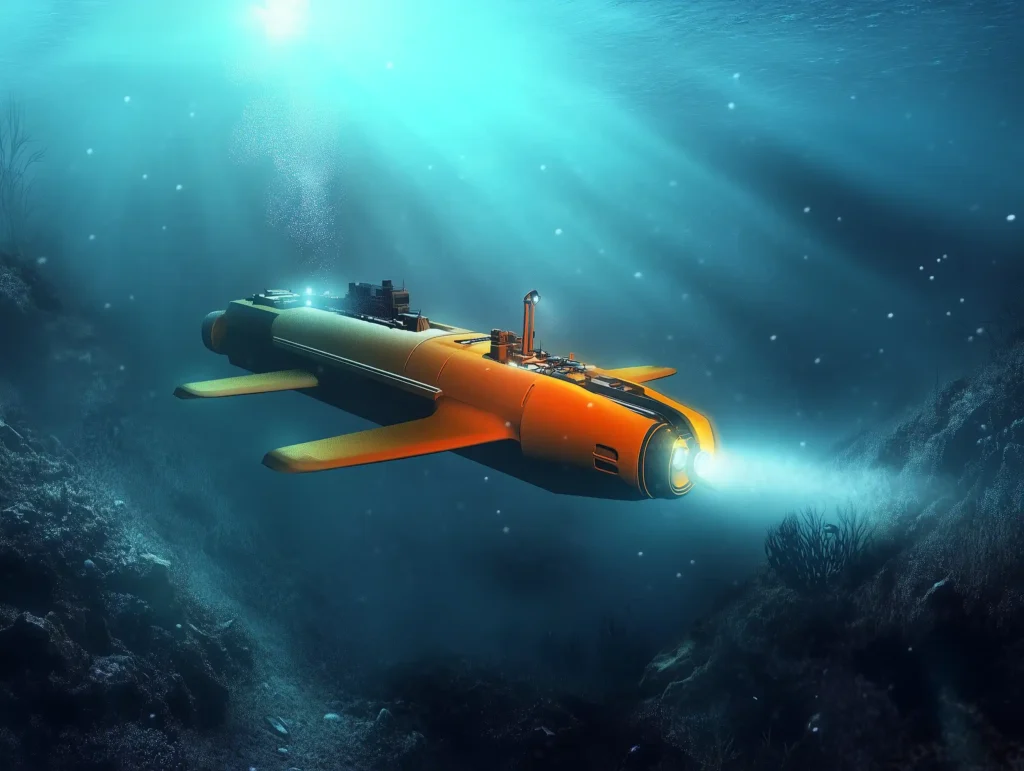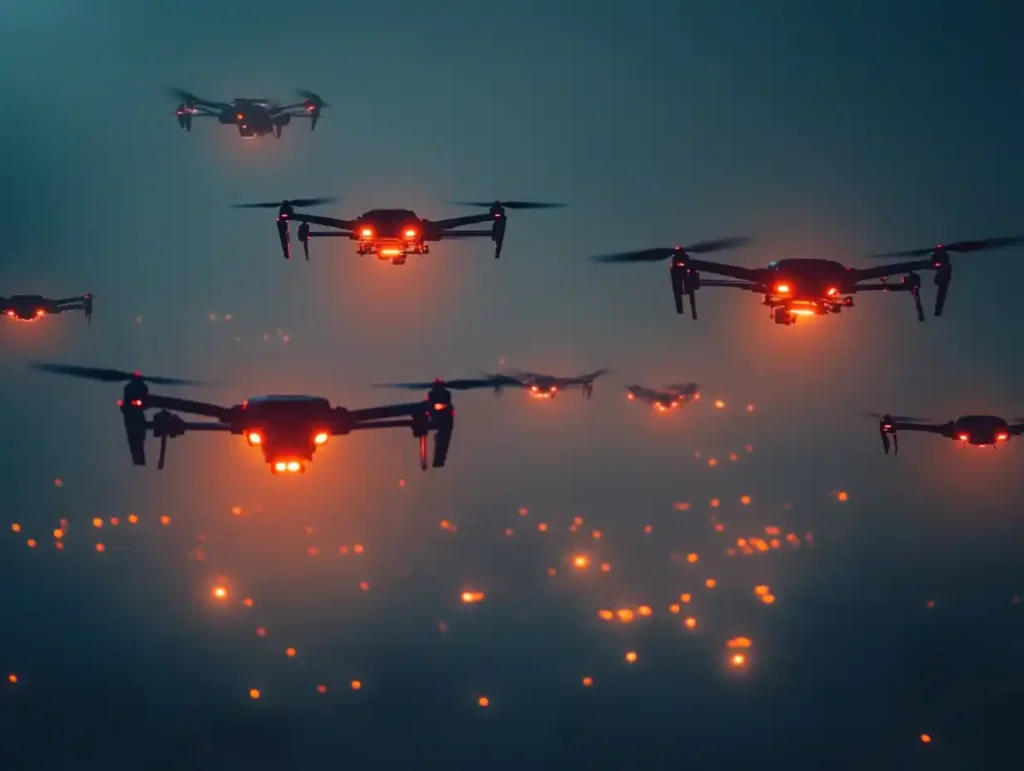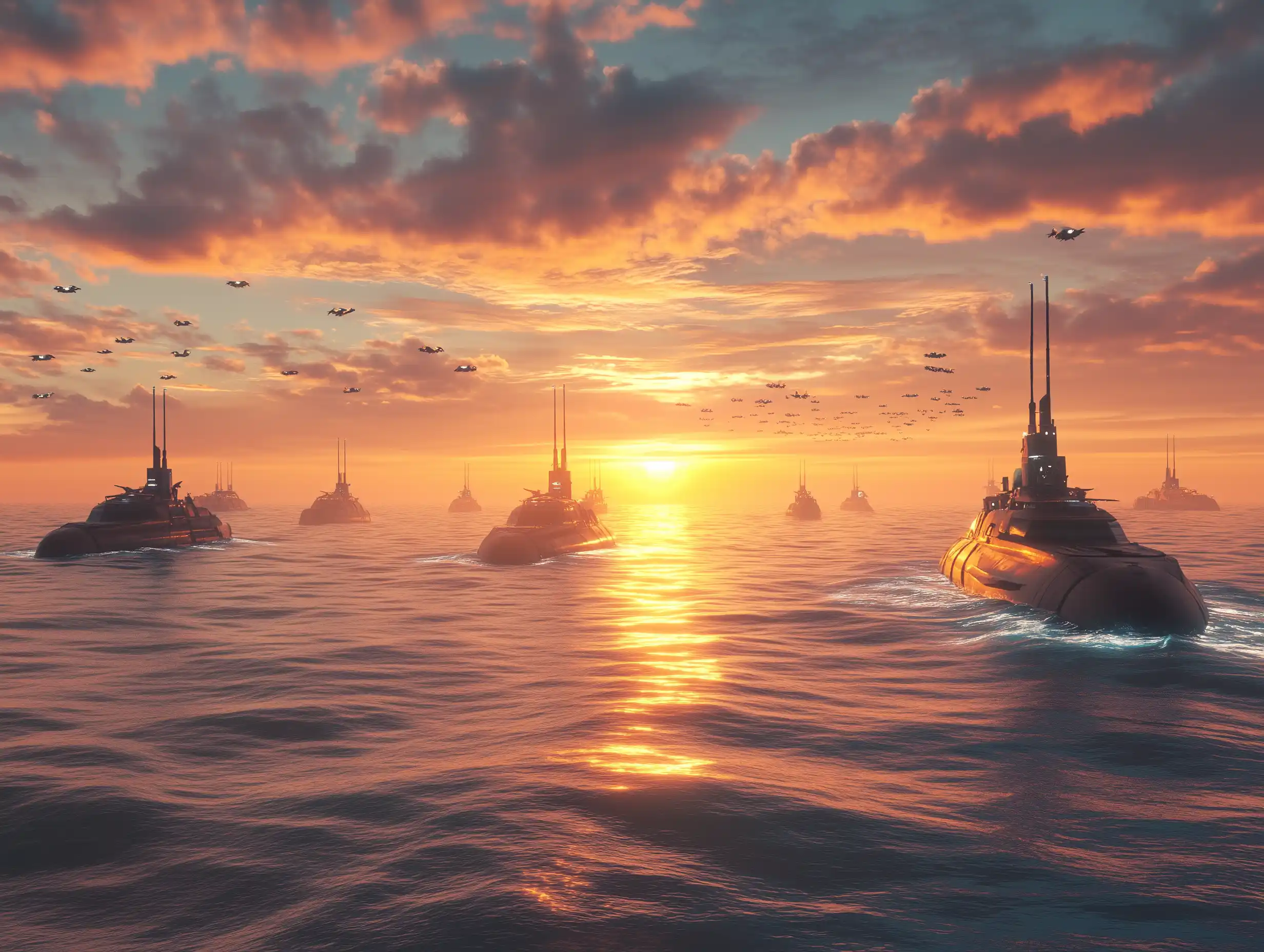Rise of Unmanned Maritime Systems in Naval Operations
Navies around the world are changing how they fight at sea. Unmanned Maritime Systems (UMS) are robot boats, submarines, and aircraft that work without people on board. These systems are making big changes to how countries protect their waters and fight at sea.
UMS come in three main types – underwater vehicles that swim beneath the waves, surface vehicles that float on top, and flying drones that watch from above. These robots can do dangerous jobs without putting sailors at risk. They can stay out at sea for weeks or months, watching and gathering information.
Ukraine has shown how powerful these systems can be. Their Sea Baby drone boats have attacked much larger Russian ships. These small, cheap drones cost about $240,000 but can damage ships worth millions.

Underwater Unmanned Systems
Underwater robots are changing how navies hunt submarines and clear mines. These robots come in different types:
- AUVs (Autonomous Underwater Vehicles) work on their own without constant control
- ROVs (Remotely Operated Vehicles) are controlled by operators through a cable
- XLUUVs (Extra-Large Unmanned Underwater Vehicles) are big submarine drones
The Hugin AUV is a famous underwater robot that can map the ocean floor and find mines. It can dive down to 6,000 meters (about 3.7 miles) deep and work for up to 90 days without coming back to shore.
Countries like the United States and United Kingdom are building even bigger underwater drones. The UK’s Project Cetus is creating a 12-meter (39 feet) robot submarine that can travel 1,000 miles underwater.
These underwater drones face tough challenges. They need to navigate without GPS, which doesn’t work underwater. They use special navigation systems that measure movement and recognize the shape of the seafloor to know where they are.

Surface Unmanned Systems
Surface drones are boats without crews that can patrol waters and attack enemy ships. Ukraine’s MAGURA V5 and Sea Baby drones show how these systems are changing naval warfare.
The Sea Baby is a small boat that can carry up to 850 kg (1,874 pounds) of explosives. It uses cameras and satellite navigation to find its targets. Ukrainian forces have used these drones to attack the Crimean Bridge and Russian warships.
The United States Navy is also building larger unmanned surface vessels. The Sea Hunter is a 132-foot drone ship that can hunt submarines. It has sailed from California to Hawaii without any humans on board, proving these systems can work far from shore.
Unmanned surface vessels aren’t just for military use. Companies are developing autonomous cargo ships that could move goods across oceans without crews. These ships use AI systems to avoid collisions and navigate safely.
Aerial Systems in Maritime Operations
Drones that fly are also important for watching the seas. These aircraft can take off from ships or land bases and keep watch over huge areas of ocean.
The MQ-8 Fire Scout is a helicopter drone that can take off and land on navy ships. It carries cameras and radar to spot other vessels far away. The larger MQ-4C Triton can fly for over 24 hours and watch 2.7 million square kilometers (about 1 million square miles) of ocean in a single mission.
These flying drones connect with ships and underwater systems to create a complete picture of what’s happening at sea. They help navies find threats and target weapons more accurately.
Modern naval drones use artificial intelligence to recognize ships and submarines automatically. They can tell the difference between fishing boats, cargo ships, and warships without human help.
The future of these systems includes swarm tactics, where many small drones work together to overwhelm enemy defenses. This makes them much harder to stop than a single large drone.
Cross-Domain Integration
The real power of unmanned maritime systems comes when they work together. Modern navies are connecting underwater, surface, and aerial drones into networks that share information.
For example, an underwater drone might find a submarine, then share that information with surface ships and aircraft to track or attack it. This “networked warfare” makes naval forces much more effective.
These connected systems create new challenges too. Countries need secure communication systems that enemies can’t hack or jam. They also need rules about when autonomous systems can use weapons without human approval.
The ethical questions around autonomous weapons are complex. Most countries agree that humans should make final decisions about using deadly force, but the exact rules are still being debated.
AI systems that control unmanned vessels need to follow international laws and avoid civilian ships. Developers are working on software that can recognize protected vessels like hospital ships and avoid harming them.
Future Developments
The next generation of unmanned maritime systems will be even more capable. Researchers are working on several exciting technologies:
- New power systems that let underwater drones stay submerged for months
- Self-healing materials that can repair damage automatically
- Improved artificial intelligence that can make more complex decisions
- Better communications that work reliably underwater and in combat
The US Navy’s Ghost Fleet program aims to create large numbers of unmanned vessels that work together with manned ships. These “loyal wingman” drones would protect larger ships and absorb attacks.
The Royal Navy’s Project Cetus is developing large underwater drones that can deploy smaller drones, creating “mothership” systems that extend their reach.
As technology improves, unmanned systems will take on more important roles in naval operations. They will change how countries control the seas and protect their interests. For navies around the world, mastering these technologies is becoming essential to maintain power at sea.

Q&A: Unmanned Maritime Systems
General Questions
Q: What are Unmanned Maritime Systems (UMS)?
A: Unmanned Maritime Systems (UMS) refer to any robotic platforms that operate autonomously or via remote control in marine environments. This includes systems functioning underwater, on the surface, and in the air.
Q: What are the primary categories of UMS?
A: The primary categories are Underwater Systems, Surface Systems, and Aerial Systems.
Underwater Systems
Q: What is a UUV?
A: A UUV (Unmanned Underwater Vehicle) is a general category of unmanned vehicles that operate underwater.
Q: What is the difference between an AUV and an ROV?
A: An AUV (Autonomous Underwater Vehicle) operates independently, executing pre-programmed missions without real-time human control. An ROV (Remotely Operated Vehicle) is tethered and human-controlled, allowing for real-time operation and high-bandwidth data transmission.
Q: What is an XLUUV?
A: An XLUUV (Extra-Large Unmanned Underwater Vehicle) is a larger class of UUV with extended range and endurance, often used for strategic missions like long-range surveillance or payload delivery.
Surface Systems
Q: What is a USV?
A: A USV (Unmanned Surface Vehicle) operates on the surface of the water and can be used for various purposes, including maritime security, patrol, and surveillance.
Q: Can you provide examples of USVs?
A: Examples include Ukraine’s Sea Baby and MAGURA V5, which have been used in naval warfare.
Aerial Systems
Q: What is a UAV used in maritime operations?
A: A UAV (Unmanned Aerial Vehicle), also known as a drone, is an aircraft without an onboard pilot. In maritime operations, UAVs can be ship-launched for reconnaissance, surveillance, and targeting.
Impact and Future
Q: How are these technologies transforming naval warfare?
A: These technologies are transforming naval warfare by enabling missions that are too dangerous, monotonous, or difficult for crewed vessels, offering advantages in stealth, persistence, and cost-effectiveness.


Leave a Reply